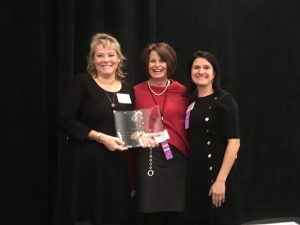It’s true, “everything is bigger in Texas” including the list of continuing education courses ERI is offering in the Lonestar state this year. Our engaging courses are presented by esteemed faculty members who teach the latest, evidence-based treatments and techniques that help therapists improve their practices and patient outcomes.
And ERI makes it easy to for Texas-area OTs, PTs, and SLPs to meet continuing education requirements; we’re an approved provider of the Texas Physical Therapy Association, our courses meet the criteria approval for Type 2 CEUs by the Texas Board of Occupational Therapy Examiners, and we submit our courses for clock hours of continuing education credits by the Texas Speech-Language-Hearing Association.
Check out our Texas-based courses below:
Tools and Strategies for Developmental Care of Special Populations in the NICU
Instructor Lisa Kleinz
July 20-21, 2019
Houston, TX
Infants Born Preterm: Identifying and Addressing Their Special Needs in Early Infancy to Support Development
Instructor Jan McElroy
August 16-18, 2019
Fort Worth, TX
Baby Beats and Breaths: Therapeutic Interventions for the Premature Infant with Cardiopulmonary Compromise
Instructor Holly Schifsky
September 28-29, 2019
San Antonio, TX
Vestibular Rehabilitation Evaluation and Treatment of Dizziness and Balance
Instructor Jeffrey Walter
October 4-5, 2019
Houston, TX
Building the Brain: A Neurobiological Approach to Assessment and Treatment
Instructor Robin Harwell
October 19-20, 2019
North Richland Hills, TX
Integrated Pediatric Assessment and Evidence-Based Treatment: 4 Day Intensive Focusing on Children with Sensory and Motor Challenges
Instructor Debra Dickson
October 24-27, 2019
Houston, TX
Acutely Adorable: Pediatric Therapeutic Interventions in Acute Care
Instructor Siobhan O’Donnell
October 26-27, 2019
Dallas, TX
Myofascial Release and Its Application to Neuro-Developmental Treatment
Instructor Gail Ritchie
November 8-9, 2019
Pearland, TX
Vision, Ocular-Motor and Movement Strategies for Integrated Learning
Instructor June Smith
November 8-9, 2019
Dallas, TX
Feeding and Swallowing in Infancy: Implications for Breast and Bottle Feeding
Instructors Robin Glass and Lynn Wolf
November 15-16, 2019
The Woodlands, TX
Geriatric Neurology in the Medically Complex Client
Instructor Jennifer Bottomley
November 15-16, 2019
Fort Worth, TX
ICU and Acute Care: From Early Mobilization to Discharge Decisions
Instructor Chris Wells
November 16-17, 2019
Houston, TX
Baby Steps: Building Ambulation Interventions for Infants and Young Children with Posture and Movement Dysfunction
Instructor Jan McElroy
December 6-8, 2019
Houston, TX
Intervention in the NICU: A Neurodevelopmental Approach
Instructor Roberta Gatlin
December 6-7, 2019
Plano, TX
Improve your practice and earn CEUs this year, register for an ERI course online or by calling 800-487-6530. We can’t wait to see you at one of our courses.



